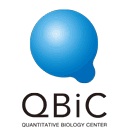TOP > セミナー&イベント > セミナー > QBiC Seminar: L. Michel Espinoza-Fonseca

|

|
|---|---|
|
Speaker |
L. Michel Espinoza-Fonseca, Ph.D. Department of Biochemistry, Molecular Biology, and Biophysics, University of Minnesota |
|
Date & Location |
Wednesday, September 27, 2017 Osaka, QBiC Bldg. A 1F lounge |
Title |
Structural mechanism for the calcium pump uncoupling by sarcolipin through the lens of the computational microscope |
Abstract |
In skeletal muscle, the sarcoplasmic reticulum Ca2+-ATPase (SERCA) activity is reversibly regulated by the 31-residue sarcolipin (SLN). SLN uncouples Ca2+ transport from ATP hydrolysis by SERCA and stimulates unproductive ATPase activity and heat generation. However, the structural mechanism responsible for internal SERCA uncoupling by SLN remains unclear. We performed microsecond molecular dynamics (MD) simulations to identify the structural mechanism for SLN uncoupling of Ca2+ transport from ATP hydrolysis for SERCA. MD simulations showed that SLN induces a 17° change in the tilt angle of the cytosolic stalk helix 4 (M4S4, residues Pro312−Lys329) of SERCA. Structural analysis revealed that this structural change in M4S4 is induced by electrostatic interactions between Glu2 and Glu7 of SLN and Arg324 and Lys328 of SERCA. We found that SLN missing either E2 or E7 causes a structural effect on M4S4 tilt similar to that of WT SLN, while deletion of both E2 and E7 prevents this structural rearrangement. We suggest that SLN-induced change in M4S4 tilt angle leads to incomplete Ca2+ occlusion by Glu309 in the transport site II, therefore favoring Ca2+ slipping back to the cytosol. We propose that altered Ca2+ occlusion by Glu309 in transport site II, induced by salt bridge-mediated tilt of M4S4, constitutes the primary mechanism by which SLN uncouples SERCA. |
Host |
Toshio Yanagida |

|
|

